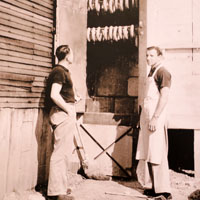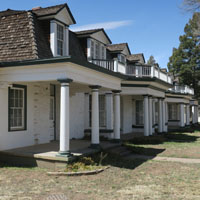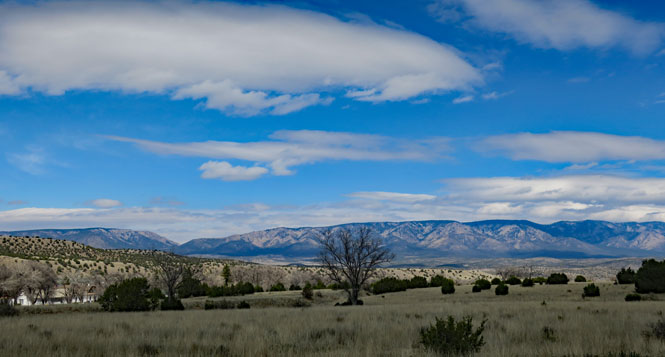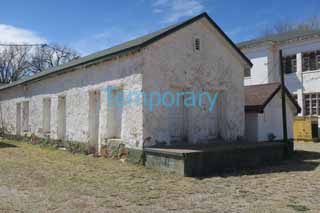March 31, 2019
Fort Stanton--established in 1855 in what was then New Mexico Territory--is one of the more complete forts from the westward expansion period of the 19th century.
 New Mexico
New Mexico
Passing by Rabbit Ears Peaks along the Cimarron Cutoff of the Santa Fe Trail. They may not amount to much, but they are visible for miles and mark the trail to a good water source on what was generally a dry route.
The fort was first established as part of the campaign to suppress the Mescalero Apaches, but has had a number of different roles since then, which largely accounts for how it has managed to remain (mostly) intact to this day.
1855: Created to contain the Mescalero Apaches
1861: Taken by
Confederate soldiers (and then re-taken by Union soldiers)
1866: Part of
the Mescalero Reservation
1896: Fort Stanton closed as an active fort
1899: Tuberculosis Hospital
1933: CCC camp created
1941: German seamen
interred
1963: New Mexico state (mental) hospital
1996: Women's prison
2000: Drug rehabilitation center
2001: Steps begun to create the New
Mexico State Monument
Those are the Capitan Mountains to the west; the highest peak of this small range is 10,200 feet. The valley to the left extends farther along behind and that's where you'll find Fort Stanton (at least one building is visible from here). It's in a good location for reliable water, and considering its first mission to remove the nomadic Mescalero, it's also right in the middle of their traditional hunting grounds.
The general layout is much like all other western forts. Everything surrounds the central square with officer quarters apart from the troop barracks.
The visitor center (in one of the original buildings) has a nice museum along with a ten-minute video overview.


Before the U.S. was at war with Germany (but, after Britain was at war), a German liner intentionally scuttled off the east coast to avoid capture by the British. The sailors and crew were eventually brought to Fort Stanton, where they served out the war.


There is a mix of styles in the buildings, explained by the various uses of the fort. In some cases, the old buildings are still at the core of the new, creating all sorts of challenge for the additional of plumbing and electricity.







Some buildings are in much better shape than others. In some cases, the interior asbestos is enough of a problem to prevent any further restoration, but probably the general reason is lack of sufficient state funding.

The main hospital buildings.

Stables, and a friendly horse.



Parts of the hospital are open for displays



The old cemetery no longer has the graves of the original troops; they have been re-buried in the Santa Fe national cemetery

The new cemetery was created to serve the immediate needs of the tuberculosis patients, and much later became connected to the New Mexico veterans cemetery.

Markers for the tuberculosis dead.
Some of the German internees are buried here.


























